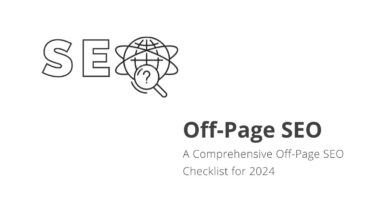
Drupal is a powerful content management system that provides a wide range of features for creating and managing websites. However, when it comes to search engine optimization (SEO), there are several common mistakes that Drupal website owners and developers often make. In this blog post, we will discuss the top Drupal SEO mistakes to avoid and how to address them.
1. Ignoring the Basic SEO Settings
One of the most common mistakes that people make when using Drupal is not paying attention to the basic SEO settings. This can be a major problem because, without proper optimization, your website may not show up in search engine results or attract as much traffic as it could.
Fortunately, Drupal provides several key SEO settings that you can use to improve your website’s visibility and ranking. These include things like page titles, meta descriptions, alt tags for images, and more. By taking the time to optimize these settings properly, you can ensure that your website is well-positioned to rank higher in search engine results pages (SERPs) and attract more visitors.
Ignoring these basic Drupal SEO settings is a mistake that many people make simply because they don’t realize how important they are.
Solution: Ensure that the basic SEO settings are configured correctly, and regularly check and update them as necessary.
2. Duplicate Content
As a website owner, you strive to create unique and engaging content for your audience. However, sometimes duplicate content can occur on your site without you even realizing it. Duplicate content is when multiple pages have the same or very similar content, which can negatively impact your Drupal SEO efforts.
One common mistake that leads to duplicate content is using boilerplate language across multiple pages. While this may seem like an efficient way to provide consistent information about your business, it can hurt your SEO rankings as search engines will view these pages as duplicates of each other. Another reason for duplicate content could be due to technical issues such as URL parameters or session IDs being included in different URLs leading search engines to consider them as separate pages with identical content.
Not only does duplicate content affect search engine rankings but it also confuses users who may not know which page has the most relevant information.
Solution: Use Drupal’s built-in canonical URL feature to tell search engines which page should be indexed and avoid creating unnecessary duplicate content.
3. Not Using Mobile-First Design
In today’s digital age, more and more people are accessing websites through mobile devices. This means that having a mobile-friendly website has become essential for SEO. However, some Drupal users still make the mistake of not using Mobile-First Design when creating their websites.
Mobile-First Design is a design strategy that prioritizes the user experience on smaller screens such as smartphones and tablets. By designing for mobile first, developers can ensure that their website is optimized for smaller screens and can be easily navigated by users on the go.
Not using Mobile-First Design can lead to several issues, including slower load times and poor user experience on mobile devices. Additionally, Google now considers page speed as an important factor in its ranking algorithm, which means that having slow-loading pages could negatively impact your website’s search engine rankings.
Solution: Use a responsive design that adapts to different screen sizes, and ensures that your website is optimized for mobile devices.
4. Slow Page Speed
Slow page speed is a common issue faced by Drupal website owners, and it can have a significant impact on SEO. Search engines prioritize fast-loading websites, which means that slow page speeds can result in lower search engine rankings. Moreover, slow websites often lead to high bounce rates and low user engagement, which ultimately affects your conversion rates.
One of the biggest contributors to slow page speed on Drupal websites is the lack of optimization. Large image sizes, excessive use of plugins and modules, and inefficient code can all make your website slower to load. Additionally, if you are hosting your Drupal website on an underperforming server or using outdated software versions, it will also affect the site’s overall performance.
Another mistake that many Drupal website owners make is not leveraging caching tools effectively. Caching technology allows for faster delivery of content by storing frequently accessed data in memory.
Solution: Optimize your website’s performance by enabling caching, minimizing HTTP requests, optimizing images, and using a content delivery network (CDN).
5. Ignoring Content Quality
It is crucial to remember that content quality plays an equally important role in driving traffic to your site. Ignoring content quality can lead to disastrous consequences for your Drupal SEO efforts.
Publishing low-quality content can negatively impact your search engine rankings and damage your online reputation. Low-quality content may include duplicate or thin content, keyword stuffing, irrelevant information, and poorly written articles. These factors can make it difficult for users to find valuable information on your site and can decrease engagement and time spent on the page.
To avoid making this Drupal SEO mistake, it is essential to invest time and effort into creating high-quality content that provides value to users.
Solution: Focus on creating high-quality, informative, and relevant content that engages your audience and encourages them to share and link to your website.
Conclusion:
Avoiding these common Drupal SEO mistakes is crucial for improving your website’s visibility and ranking in search engine results. By ensuring that your Drupal website is optimized for SEO, you can attract more traffic and improve your online visibility. Regularly reviewing your website’s SEO and making necessary adjustments can help you stay ahead of the competition and keep your website’s performance optimized for search engines.




